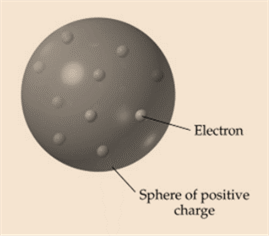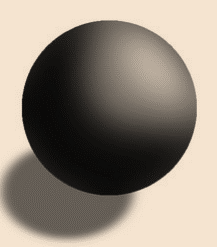
Concept explainers
Interpretation:Difference between Thomson’s and Dalton’s atomic theory needs to be explained.
Concept introduction: Theory is a group of connected ideas or concepts intended to describe something. It involves question- “why” or “how anything/ somethings happens. It is based on inference.
Answer to Problem 1RQ
Dalton’s atomic theory was proposed by John Dalton. According to the Dalton’s atomic theory, matter is composed of tiny particles, all atoms of certain element are identical, compound contains more than one element. In J.J. Thomson’s atomic theory, electrons are distributed inside a positive mass like raising in a plum pudding.
Explanation of Solution
Scientist John Dalton and Scientist JJ Thompson proposed different models of an atom.Difference between Thomson’s atomic theoryand Dalton’s atomic theory is mentioned below:
| Thomson’s atomic theory | Dalton’s atomic theory |
| Thomson’s model of the atom includes electrons in a plum pudding model. | Dalton’s model does not and is more of a solid sphere. |
| Tiny negative electrons were distributed in a positive (+ve) mass inside the atom. The electrons were like negative (-ve) raising in a positive(+ve) plum pudding dough. | Atoms were tiny, hard spheres that vary in size as well as mass, but can’t be split into smaller pieces. |
| Picture of plum pudding model proposed by JJ Thompson:
| Picture of solid sphere model proposed by the scientist John Dalton:
|
Thomson’s atomic theoryand Dalton’s atomic theory are not the same.
Chapter 3 Solutions
World of Chemistry, 3rd edition
 ChemistryChemistryISBN:9781305957404Author:Steven S. Zumdahl, Susan A. Zumdahl, Donald J. DeCostePublisher:Cengage Learning
ChemistryChemistryISBN:9781305957404Author:Steven S. Zumdahl, Susan A. Zumdahl, Donald J. DeCostePublisher:Cengage Learning ChemistryChemistryISBN:9781259911156Author:Raymond Chang Dr., Jason Overby ProfessorPublisher:McGraw-Hill Education
ChemistryChemistryISBN:9781259911156Author:Raymond Chang Dr., Jason Overby ProfessorPublisher:McGraw-Hill Education Principles of Instrumental AnalysisChemistryISBN:9781305577213Author:Douglas A. Skoog, F. James Holler, Stanley R. CrouchPublisher:Cengage Learning
Principles of Instrumental AnalysisChemistryISBN:9781305577213Author:Douglas A. Skoog, F. James Holler, Stanley R. CrouchPublisher:Cengage Learning Organic ChemistryChemistryISBN:9780078021558Author:Janice Gorzynski Smith Dr.Publisher:McGraw-Hill Education
Organic ChemistryChemistryISBN:9780078021558Author:Janice Gorzynski Smith Dr.Publisher:McGraw-Hill Education Chemistry: Principles and ReactionsChemistryISBN:9781305079373Author:William L. Masterton, Cecile N. HurleyPublisher:Cengage Learning
Chemistry: Principles and ReactionsChemistryISBN:9781305079373Author:William L. Masterton, Cecile N. HurleyPublisher:Cengage Learning Elementary Principles of Chemical Processes, Bind...ChemistryISBN:9781118431221Author:Richard M. Felder, Ronald W. Rousseau, Lisa G. BullardPublisher:WILEY
Elementary Principles of Chemical Processes, Bind...ChemistryISBN:9781118431221Author:Richard M. Felder, Ronald W. Rousseau, Lisa G. BullardPublisher:WILEY







